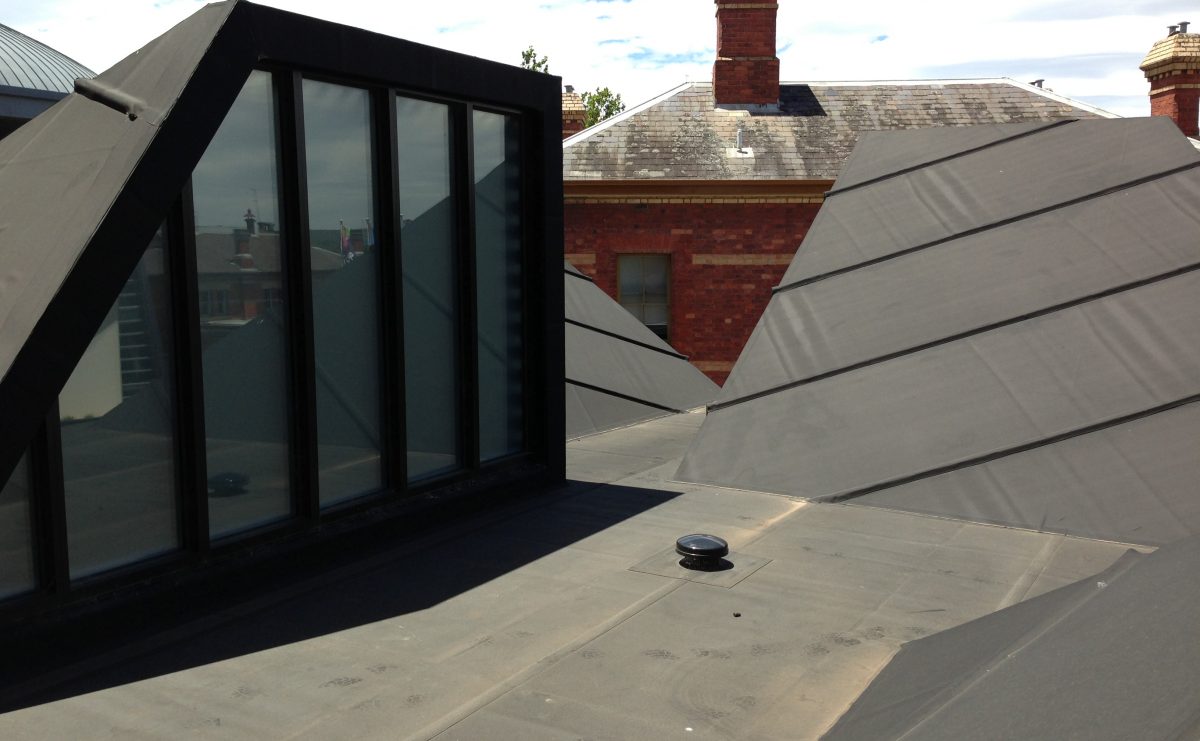Butyl rubber is a synthetic rubber, a copolymer of isobutylene with isoprene, and it possesses unique physical and chemical properties. It will resist ageing from heat, sunlight & ozone. It has excellent gas impermeability, toughness, and remains flexible at low temperatures.

Butyl rubber can be used in many different ways to achieve different finishes. In almost every case, a system like this installed by The Waterproofers will come with a 20-year materials warranty from the membrane manufacturer and a 20-year workmanship warranty provided by ourselves. Butyl rubber has been our signature material for the bulk of our over 35 years of operation. The most common membrane systems of this type on the market in Australia are Butylite, Butylclad, and Butynol.
Fixed Roofing
Butyl rubber is most commonly used on roofing in a fully adhered fashion. This means that the membrane is 100% stuck to the substrate using a specially developed adhesive system. In conjunction with system matched tapes, primers, cleaners, and detailing methods, a fully waterproofed roof can be provided quickly and easily, largely irrelevant of shape or changes in direction.
Butyl rubber is most commonly available in black and grey, and in material thicknesses of 1mm & 1.5mm. For larger projects where finish colour is important special batches can be commissioned.
Ballasted Roofing
Butyl rubber is perfectly suited to ballasted roofing systems as it has the ability to be factory & site vulcanised into large panels. Ballasted roofs only require adhesion at the edges & any penetration detail allowing for super-fast installations of the waterproof membrane.
Ballasting of a membrane roof can take many forms, from simple stone to elaborate living roof systems. The Waterproofers have extensive experience in detailing and installing these roofing systems including working with horticulturists and landscapers to achieve the most detailed living roof.
Balconies & Bathrooms
The unique properties of butyl rubber make it an ideal membrane for waterproofing balconies & bathrooms. It can be installed before the screed to give a double layer system (with a liquid membrane on top of the screed) or directly prior to application of the trafficable surface.
When used on a balcony or bathroom it should be planned in advance. The nature of the installation requires that the membrane is installed onto the framework, not onto the cladding like liquid systems. Butyl rubber should also be installed prior to any door or window frames to give 100% encapsulation. It is also important to note that butyl rubber requires special adhesives for bonding of surface finishes. These should be discussed and specified prior to settling on butyl rubber for your balcony or bathroom.
Ponds, Planters, & Potable Water Storage
Butyl rubber has been used globally for water storage systems since the mid-20th century. In its vulcanised form it is suitable for the storage of potable (drinking) water. It can also be made to suit most shapes. We use Beutyliner liners for our ponds, planters & potable water storage systems.
When building a planter, any shape can be achieved providing the walls are vertical and the base is horizontal. Any number of changes of shape can occur with those boundaries. We can also plan and implement internal drainage systems to assist plant growth and excess water evacuation.